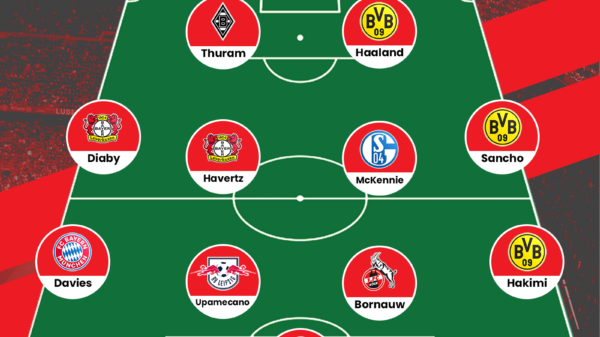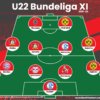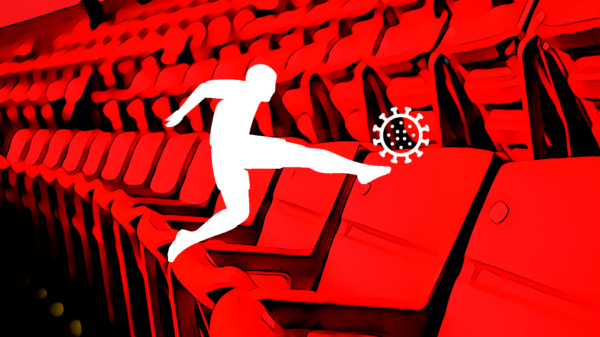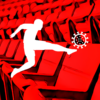Bayern Munich 2-1 Borussia Dortmund | Though the two sides have had completely contrasting seasons so far, one is arguably the best passing team in Europe, while the other still remains a benchmark for those looking to employ a pressing system. And when it comes to the Klassiker, both these sides are often more well matched than points, form and the table suggests. This one at the Allianz Arena, was no different. The game was another reminder as to why the German domestic set-up remains arguably at the top in all aspects; the football on show was breath-taking, and the stands packed with clubs putting supporters first with staggeringly low ticket prices as displayed by www.1st4footballtickets.com, compared to some of Europe’s other leagues.

Bayern Munich (3-4-2-1): 1. Neuer | 5. Benatia | 17. Boateng | 27. Alaba | 3. Alonso | 21. Lahm | 18. Bernat | 10. Robben | 19. Gotze (Ribery 70’) | 25. Muller (Pizarro 81’) | 9. Lewandowski (Rode 88’)
Borussia Dortmund (4-3-3): 1. Weidenfeller | 26. Piszczek | 25. Sokratis | 15. Hummels (Subotic 46’) | 37. Durm | 5. Kehl | 6. Bender | 10. Mkhitaryan | 7. Kagawa (Grosskreutz 71’) | 11. Reus | 17. Aubameyang (Ramos 81’)
Goals: Reus 31’, Lewandowski 72’, Robben (pen) 85’
Bayern’s defence and their contrasting halves in possession
Expanding on that ‘Passing vs Pressing’ notion, on the face of it, Borussia Dortmund pushing higher up was the ideal scenario in ensuring Bayern Munich’s ability to retain possession was kept out at the root of it. Right from their idea of employing Manuel Neuer as a ‘sweeper keeper’, to Xabi Alonso setting in to a deeper role when they start from the back, Bayern intend on keeping as much possession as possible, with shorter direct passes as opposed to longer balls over the top. To force them into those long balls, and also prevent the Bayern midfield from joining into the possession game was Dortmund’s strategy from the start.
This certainly did work, especially in the first 45 minutes where Bayern’s passes were more lateral at the back, with two of the top three passing combinations involving right sided Mehdi Benatia to the centrally placed Jerome Boateng and David Alaba on the opposite end back to the German international defender (the other top passing combination was Boateng to the retreating Alonso). Dortmund’s doubled lined organized pressing system (explained later) was instrumental in preventing that midfield from finding the right touch with the passes from defence intended for that midfield just not feasible enough for the home side.

As seen above, with Bayern playing a three man defensive system, Dortmund also switched to a front line of three when not in possession with Pierre-Emerick Aubameyang, Shinji Kagawa and Marco Reus going almost man for man on Bayern’s defensive trio. The pressure was telling, and though Dortmund’s pressing is a well-documented approach, it often remains unplayable at times.
But what this pressing contrarily did for Dortmund was that it (to an extent) prevented them from playing on there threatening counter. The pressing prevented Bayern from playing their passes, but also kept them deep, which they continued to do. So when Dortmund did regain possession (most often in their own half), they were unable to quickly spring in behind Bayern’s defence as the deep line they were supposedly forced into ensured they weren’t vulnerable to quick breaks.
Dortmund did take the lead, in arguably the most unimaginable fashion; not in terms of the goal-scorer, but the fact that it came from a wide cross (as Dortmund weren’t particularly playing from the wings, or even trying to) and off Marco Reus’ head (that just doesn’t happen often, this the second time I believe).
What that did though was it allowed Jurgen Klopp to ease the press a little and restrain his side from pushing Bayern quite as back as they did. Pep Guardiola ofcourse responded with pushing his defenders higher up, and this further allowed them to connect with the midfield. Bayern started to grow into a higher line in the second half as Dortmund’s pressing retreated further allowing the home side to play their regular passes more frequently as opposed to long balls.

Bayern’s equalizer did come as a result of the defence connecting with the midfield zone, but on a larger level, it gave them better control of the game which they didn’t have in the first half and something that Dortmund were content with conceding in the second. In retrospect, one would say maybe Klopp should have maintained that same press and push Bayern Munich back, but the reasonable thing to do was to ease it off.
The press was effective, but unsustainable
It’s often easy to constitute pressing as just chaotic closing down of the man on the ball, but there’s an organization in the chaos that is vital for it to be effective, something that Dortmund have grown to become leaders of in the modern game.
When not in possession, Borussia Dortmund phased into a 4-3-3 system which involved the full-backs maintaining a flat back line with their central defenders as the six ahead of them took on an organized pressing game. The front three, as shown above, were the higher pressers and did so constantly. Winning possession was certainly on the agenda, but Bayern Munich’s defenders are among the most comfortable on the ball and unlikely to concede possession in those dangerous areas. Dortmund were keen on the press but not on conceding unnecessary fouls by over-committing to it (dead balls from the back give Bayern an opportunity to further get organized to play around the press).
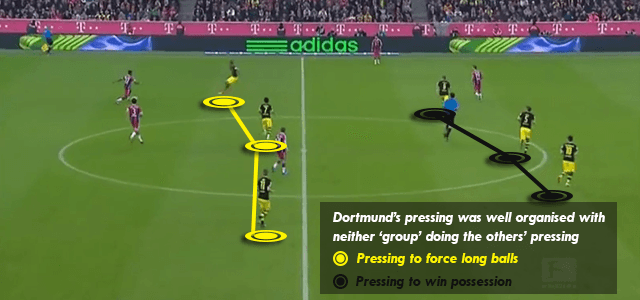
As seen above, the front three thus pressed with the intention of putting pressuring and forcing long-balls, something which Dortmund would be capable of dealing with in their back-line (anything but facing ground passes from Bayern!). In the instances where the long-ball didn’t happen and instead Bayern’s defence did find its passes into the midfield, the trio of Sebastian Kehl, Sven Bender and Henrikh Mkhitaryan were the ones relied upon to commit fully in winning possession rather than just applying pressure.
The issue with pressing is that it’s difficult to maintain the same intensity throughout the 90, so while an opponents’ approach may be impossible in the opening 20 minutes, it certainly is a viable avenue in the closing 20. This, compiled with Klopp’s instructions to ease the press, Bayern Munich grew better into the game, got more forward passes going through the centre, and crucially the midfield was involved further.
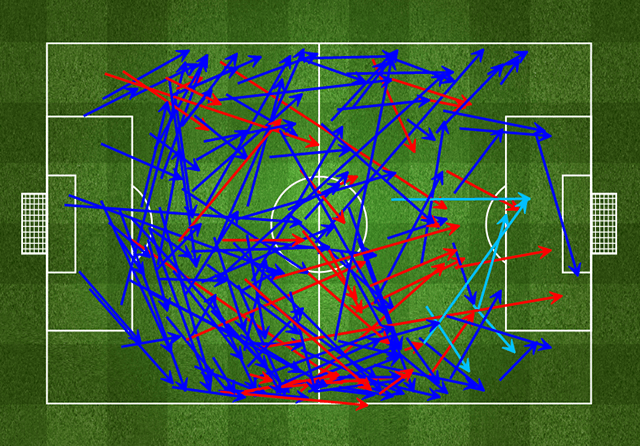

Illustraion via | FourFourTwo/Statzone
As stated earlier, besides the equalizer, Bayern didn’t directly create too many chances from the centre but it certainly gave them further control of the game and crucially allowed them to connect with their wider players which was proving to be the most effective area in terms of creativity. Above is Bayern’s completed & failed passes in the first (top) and second half (bottom).
Bayern maintained their width, not forced into narrowness
While Dortmund’s press was effective, it did little in thwarting Bayern’s wide approach. The problem was that the away side didn’t particularly prepare for the wide areas, both defensively and in attack. Besides Erik Durm and Lukas Piszczek at full-back who maintained virtually a flat-back line, there was nothing from Klopp to particularly deal with the threat from Juan Bernat and Arjen Robben.
This is not to say that Dortmund didn’t press in wider areas; they did, a little too much in fact. While Dortmund’s aim was to make the game narrow, Bayern instead continued to keep the game stretched and took advantage of the method in which Dortmund pressed. It was a bit naïve on the part of the away side as their pressing didn’t specifically take into account Bayern Munich’s approach (besides adding Kagawa for a three man press up-front).
The pressing system employed put focus on following the ball rather than watching the man or indeed any runners. So a run from the left-flank shifted all the focus right from Dortmund’s defence to the middle press onto that side, keeping the opposite end worryingly free. The likes of Robben were found in acres of space when the play was focused on the opposite side. Worrying because you’d think there’d be some sort of instruction to contain Robben. This side-to-side pressing could be effective in overloading that particular side, but leaves the team vulnerable on the other end.


There were plenty of occasions where this focus on one side completely opened up Dortmund’s defence for Bayern to play through. Most notably Thomas Muller was the beneficiary as Robben played a simple pass through to the German who made a run through the centre into the box and yet was in behind Dortmund’s right-back in the four man defence. Robben himself made a run through the middle taking advantage of that overload but he too like Muller before him was denied by Roman Wiedenfeller. This happened a couple of times at regular intervals through the contest.
Bayern’s attempt to keep the play stretched was helped by Dortmund’s reluctance to even attempt to prevent that. On another day more goals could have come of it, as seen above chances were created primarily from the side or as a result of a pass being played on to the wider areas.
Substitutions affect the result
It’s also interesting to note how the substitutions effected the game particularly one each for either side. Though neither manager made a substitution with a tactical changes in mind (besides Klopp when he brought Grosskreutz on to protect the lead, only to find Bayern strike the equalizer a minute later and Guardiola bringing Rode on with two minutes to go to put more men in the middle), substitutions did change the course of the result.
Neven Subotic was brought in at half-time for the injured Mats Hummels and put in a decent shift until Franck Ribery was brought on 20 minutes from time. After being on the pitch for just two minutes, it was Ribery’s penetrative run and attempted ball that led to the equalizer as Subotic intercepted the pass meant for Robben; unfortunately for the Serb it fell straight onto the path of Lewandowski.
The ex-Mainz man was more at fault for the third goal of the game, his poor clearance deflecting of Ribery and his recovery to make up for the error saw him conceded a cheap penalty for pulling his fellow substitutes’ shirt.
Where does this leave them?
While one looks set to retain the league title, even at this early stage, the other is flirting in the relegation zone with a huge 17 point gap after only 10 games. It’s unlikely that anyone can stop the superiority of Bayern Munich and you’d be naïve for thinking they won’t retain their crown. For Borussia Dortmund, their contrasting league and European form bewilders many but it’s unlikely that this slump is perpetual. Unfortunately for them though, even when they recover, the gulf in class from their opponents is far too large to contend with over a season.
Written by Sami Faizullah. Chief Editor on this website.





















































